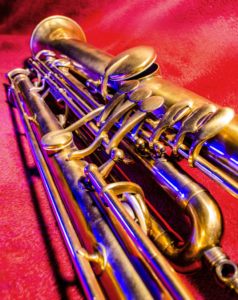Bellingham Wind Works
2405 Meridian Street
Bellingham, WA 98225
Tue-Fri 10-6, Sat 10-4
360.733.5840

We at Wind Works are working on creating our own set of fingering charts, but while those are in development, here are some links to good resource sites for your instrument. All links below will open in a new browser tab.
Flute Tunes has a great fingering chart and plenty of articles and tips for flute players, including alternate and trill fingerings. A great app is available just for smart phones and tablets from Kyle Bennett. (A simpler fingering chart for beginners may be found here.) A printable flute fingering chart is available here. This excellent page of information on the flute was submitted by one of our readers, Emily.
Woodwind Fingering Guide has plenty of information on any oboe fingering you could ask for, from basic first octave fingerings to trill keys, with notation. This link leads to the basic first octave. A printable fingering chart is available here.
Woodwind Fingering Guide has a full range of fingering charts for Boehm, Albert and Oehler-system clarinets. This link leads to a basic range fingering chart (where most beginners start). A printable fingering chart is available here. Alto and Bass clarinets have one extra note, which is accounted for on this chart.
Woodwind Fingering Guide has a thorough fingering chart for the full range of all saxophones, and includes names of ranges, as well as alternate and trill fingerings. This link leads to the basic beginners range. (A simpler fingering chart for alto sax beginners may be found here.) A printable fingering chart is available here.
The International Double Reed Society has a good chart for where your fingers should go. The left side of the chart corresponds to the back of the instrument (the side that faces you), and the right side corresponds to the front of the instrument, which faces your audience. This is an excellent chart with the keys labeled by name. (A variety of fingering charts for everyone from beginners to advanced players may be found here.)
Basic French Horn fingering charts are available with notation and without. If you have a single horn, you will need to determine if your French Horn is in F or Bb. Most beginners will start on a horn in F.
Andrew Spang has created a terrific fingering chart with note names, concert pitch, and when to use your 1st or 3rd slide to tune a note. (A simple trumpet fingering chart may be found here, but the other one is way better.) A basic printable fingering chart is available here. Remember that the finger button closest to the mouthpiece is the first one.
Trombones do not have fingering charts; instead, they have position charts. This link gives good approximations for where 1st-7th position should be located (it will vary by trombone brand and we recommend checking with a tuner and a teacher, but it’s a good starting point.) There is also a good resource page for beginner trombonists here, with flash cards. For valve trombones, see the Baritone section below.
Andrew Spang has a terrific fingering chart for treble clef baritone and euphonium with concert pitches and alternate fingerings. (There is also a really basic one here, but the other one is better.) Remember that the finger button closest to the mouthpiece is the first one.
Mouthpiece Express has a decent fingering chart for bass clef baritone and euphonium. There is also the more basic one (scroll down the page to find the bass clef fingerings). Remember that the finger button closest to the mouthpiece is the first one.
Bewley Music has a good fingering chart with corresponding fingerings for sousaphone and tuba. Of course, there is always the basic fingering chart as well.
Beginning percussionists should know their way around a bell kit or xylophone, so here are the charts for mallet percussion. They are very similar to piano in their layout. Here’s a primer on how to hold your sticks and some variations.
And just for fun, here are the fingerings for the Sarrusophone.
